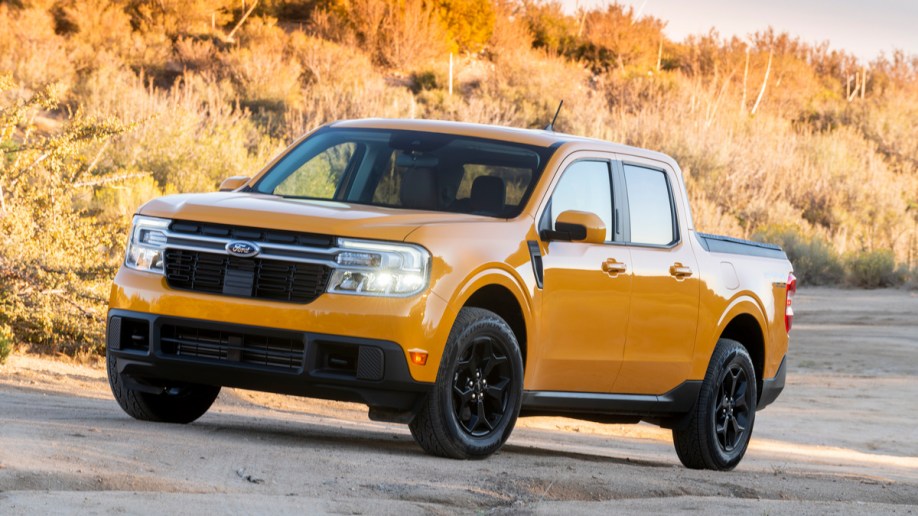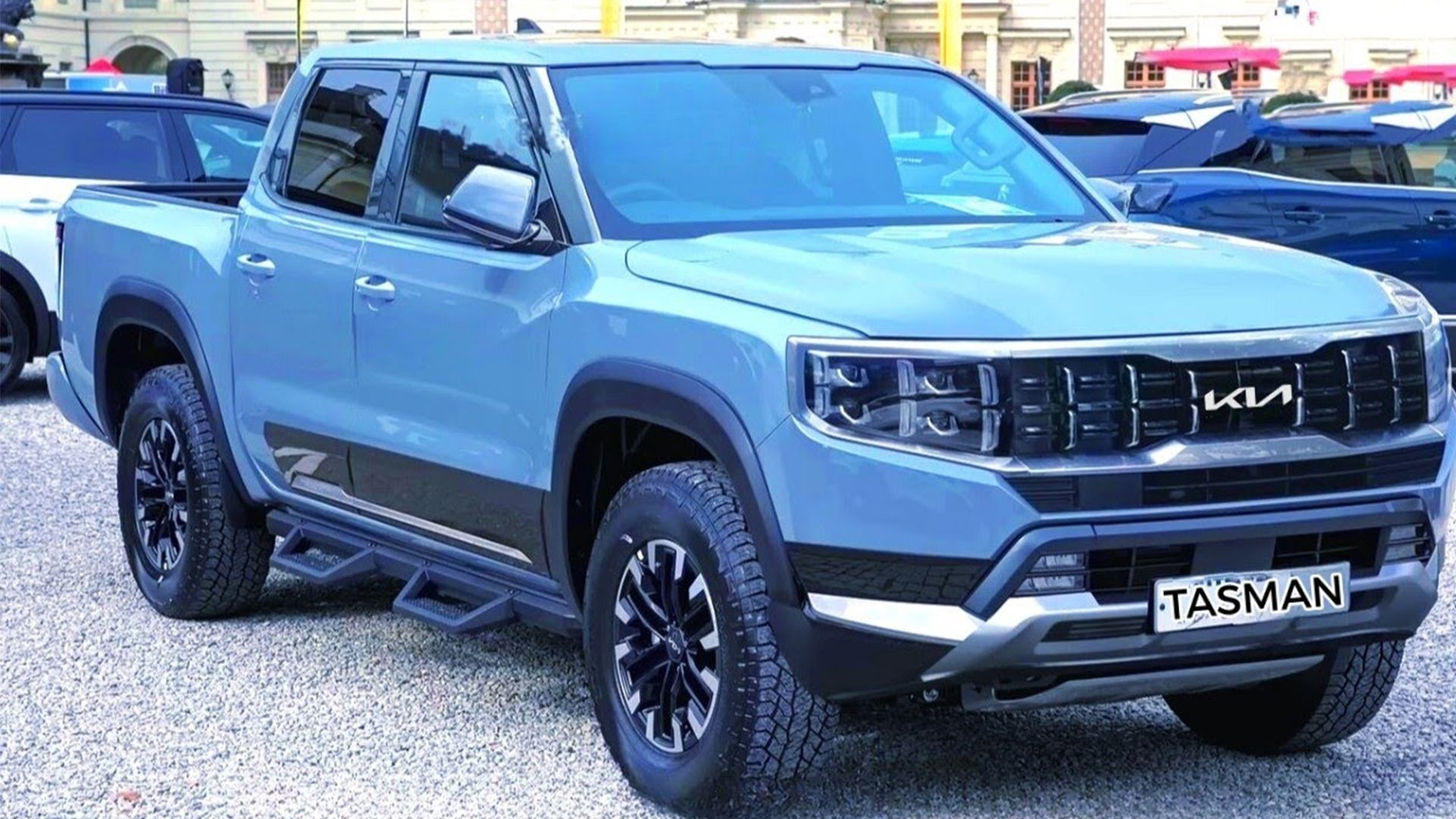Who Makes Small Pickup Trucks: A Comprehensive Guide to the Resurgent Segment pickup.truckstrend.com
The landscape of the American automotive market is constantly evolving, and perhaps no segment illustrates this more vividly than the small pickup truck. Once a staple, then largely overshadowed by their full-size brethren, small pickups are experiencing a powerful resurgence. Drivers are rediscovering their versatility, maneuverability, and often, their surprising capability and fuel efficiency. But with a growing array of options, the question arises: Who exactly makes these compact and mid-sized workhorses, and which one is right for you?
This comprehensive guide will delve into the manufacturers currently dominating this vibrant segment, explore the different types of small trucks available, and provide actionable insights to help you navigate your purchase decision.
Who Makes Small Pickup Trucks: A Comprehensive Guide to the Resurgent Segment
The Resurgence of the Small Pickup: Why Now?
For years, the mantra in the pickup world seemed to be "bigger is better." Full-size trucks grew in dimensions, power, and price, leaving a gap for those who needed utility without the bulk. However, changing consumer preferences, rising fuel costs, and a demand for more manageable daily drivers have paved the way for the small pickup’s comeback. These trucks offer a "Goldilocks" solution: they’re compact enough for urban driving and parking, fuel-efficient enough for daily commutes, yet capable enough for weekend adventures, light hauling, and DIY projects. The segment now encompasses both traditional body-on-frame designs and innovative unibody constructions, offering an unprecedented variety of choices.
Key Players in the Small Pickup Market: Traditional & Emerging
The small pickup truck segment is a fascinating mix of established titans and ambitious new entrants, each bringing unique strengths to the table.
1. The North American Stalwarts (Body-on-Frame Mid-Size)
These manufacturers have long been the backbone of the small truck market, offering robust, traditional designs known for their durability and capability.
- Toyota: The Toyota Tacoma is arguably the king of the mid-size segment. Renowned for its legendary reliability, strong resale value, and off-road prowess (especially the TRD Pro and TRD Off-Road trims), the Tacoma has been a consistent best-seller for decades. It’s a go-to choice for adventure seekers and those who prioritize proven dependability.
- Chevrolet/GMC: General Motors offers a compelling duo with the Chevrolet Colorado and its upscale sibling, the GMC Canyon. These trucks boast strong engine options, including powerful V6s and efficient diesels (historically, though the lineup evolves), and a range of trims from basic work trucks to luxurious off-roaders like the Colorado ZR2. They offer a comfortable ride and modern technology, making them versatile contenders.
- Ford: The Ford Ranger returned to the North American market a few years ago, leveraging its global success. Built on a proven platform, the Ranger offers a powerful turbocharged EcoBoost engine, impressive towing capacity, and a rugged, no-nonsense approach. It’s a strong choice for those needing robust capability in a smaller package.
- Nissan: The Nissan Frontier has recently undergone a significant redesign, modernizing its interior and powertrain while retaining its reputation for rugged simplicity. With a powerful V6 engine standard across the lineup, the Frontier offers solid capability and a more refined driving experience than its predecessors, appealing to those who appreciate straightforward utility.
- Honda: The Honda Ridgeline occupies a unique space in the mid-size segment. While often categorized with its peers, its unibody construction (shared with SUVs like the Pilot) sets it apart. This design grants it a car-like ride, excellent on-road manners, and a comfortable, spacious interior. It’s ideal for those who prioritize comfort and light-duty utility, offering an innovative in-bed trunk and a dual-action tailgate.


2. The New Contenders (Unibody Compact & Mid-Size)
These vehicles represent a fresh approach, blurring the lines between trucks and SUVs, often prioritizing fuel efficiency, comfort, and urban usability.
- Ford: The Ford Maverick has taken the market by storm. This compact unibody truck offers a standard hybrid powertrain (delivering exceptional fuel economy) and an optional turbocharged gasoline engine. Its accessible price point, customizable bed, and car-like driving dynamics make it an incredibly popular choice for urban dwellers, first-time truck buyers, and those seeking efficiency with open-bed versatility.
- Hyundai: The Hyundai Santa Cruz is another unibody entrant, dubbed a "Sport Adventure Vehicle" by Hyundai. Based on the Tucson SUV platform, it offers distinctive styling, a high-tech interior, and a surprisingly capable all-wheel-drive system. The Santa Cruz blends the utility of a small bed with the comfort and features of a modern crossover, appealing to those with an active lifestyle who don’t need heavy-duty towing.

Understanding the Different Types: Body-on-Frame vs. Unibody
The fundamental difference in construction dictates much about a small pickup’s capabilities and driving characteristics.
-
Body-on-Frame:
- Definition: The vehicle’s body is bolted onto a separate, rigid frame. This is the traditional truck construction.
- Pros: Exceptional durability, higher towing and hauling capacities, better for extreme off-roading, easier to repair collision damage (as the frame can be replaced/repaired separately).
- Cons: Heavier, often less fuel-efficient, typically a harsher and less refined ride, less agile handling.
- Examples: Toyota Tacoma, Chevrolet Colorado/GMC Canyon, Ford Ranger, Nissan Frontier.
-
Unibody (Unitized Body):
- Definition: The body and frame are integrated into a single, cohesive structure. Similar to most modern cars and SUVs.
- Pros: Lighter weight, better fuel economy, more car-like ride comfort, improved handling and maneuverability, enhanced crash safety (due to integrated crumple zones).
- Cons: Lower towing and hauling capacities (generally), less capable for extreme off-roading, more complex to repair after significant collision damage.
- Examples: Ford Maverick, Hyundai Santa Cruz, Honda Ridgeline.
Key Considerations When Choosing a Small Pickup
Selecting the right small pickup requires careful thought about your specific needs and priorities:
- Primary Use: Is it a daily commuter, a work truck, an off-road adventurer, or a family hauler?
- Towing & Payload Needs: Do you need to tow a boat or trailer? How much weight will you carry in the bed? Check specific capacities.
- Fuel Efficiency: Are you prioritizing miles per gallon? Consider hybrid options (Maverick) or more efficient gasoline engines.
- Off-Road Capability: Do you need 4×4, higher ground clearance, and specialized off-road trims (e.g., TRD Pro, ZR2)?
- Budget: Factor in not just the purchase price, but also insurance, fuel, and maintenance costs.
- Features & Technology: What infotainment, safety features, and driver-assist technologies are important to you?
- Cabin Comfort & Size: Do you need a spacious crew cab for passengers, or is an extended cab sufficient?
Practical Advice for Prospective Buyers
- Test Drive Multiple Models: Don’t settle for the first one you like. Drive both body-on-frame and unibody options to feel the difference in ride and handling.
- Assess Your Real Needs: Be honest about how much truck you actually need. Don’t overpay for towing capacity or off-road features you’ll rarely use.
- Research Reliability and Resale Value: Brands like Toyota consistently rank high in these areas, which can save you money in the long run.
- Consider Aftermarket Potential: If you plan on customizing your truck for off-roading or specific work, research the availability of aftermarket parts for your chosen model.
- Don’t Forget the Bed: Think about the bed length and features (e.g., bed liners, tie-downs, power outlets) that are important for your use cases.
Estimated Starting MSRP for Small Pickup Trucks (2024 Models)
Please note: These are estimated starting Manufacturer’s Suggested Retail Prices (MSRPs) for base models and do not include destination charges, options, taxes, or dealer markups. Prices can vary significantly by trim level, configuration (e.g., 2WD vs. 4WD, cab size), and optional features. Always check current pricing with a local dealer.
| Make/Model | Type | Estimated Starting MSRP (USD) | Key Feature/Niche |
|---|---|---|---|
| Ford Maverick | Unibody (Compact) | ~$23,800 | Standard Hybrid, Unbeatable Fuel Economy, Value |
| Hyundai Santa Cruz | Unibody (Compact) | ~$28,000 | Crossover-like Ride, Stylish Design, Tech-Forward |
| Nissan Frontier | Body-on-Frame (Mid-Size) | ~$30,000 | Modernized, Standard V6, Rugged Capability |
| Ford Ranger | Body-on-Frame (Mid-Size) | ~$32,700 | Turbocharged Power, Strong Towing, Global Platform |
| Chevrolet Colorado | Body-on-Frame (Mid-Size) | ~$31,000 | Diverse Trims, Powerful Engines, Off-Road Focus |
| GMC Canyon | Body-on-Frame (Mid-Size) | ~$38,000 | Premium Styling, Upscale Interior, Off-Road AT4X |
| Honda Ridgeline | Unibody (Mid-Size) | ~$40,000 | Car-like Ride, Spacious Interior, In-Bed Trunk |
| Toyota Tacoma | Body-on-Frame (Mid-Size) | ~$32,900 | Legendary Reliability, Strong Resale, Off-Road King |
Frequently Asked Questions (FAQ)
Q: What’s the difference between a compact and a mid-size truck?
A: Historically, compact trucks were truly small (like the old Ford Ranger or Toyota Pickup). Today, "small pickup" often refers to both compact (like the Ford Maverick or Hyundai Santa Cruz, which are unibody and car-based) and mid-size (like the Toyota Tacoma or Chevy Colorado, which are body-on-frame and more traditional). The primary distinction now often lies in their construction and overall footprint/capability.
Q: Are small pickups good for towing?
A: Yes, many mid-size, body-on-frame small pickups offer impressive towing capacities, often ranging from 6,000 to 7,700 pounds. Unibody compact trucks like the Maverick and Santa Cruz have lower capacities (typically 2,000-4,500 pounds) but are still sufficient for small trailers, jet skis, or utility trailers.
Q: Are small pickups fuel-efficient?
A: Generally, yes, more so than full-size trucks. Unibody compact trucks like the Ford Maverick Hybrid offer excellent fuel economy (e.g., 37 MPG combined). Mid-size gasoline trucks typically range from 18-24 MPG combined, depending on the engine and drivetrain, which is still better than most full-size options.
Q: Can I take a small pickup off-road?
A: Absolutely! Many mid-size trucks, particularly models like the Toyota Tacoma TRD Pro, Chevrolet Colorado ZR2, or Ford Ranger Tremor, are specifically designed for serious off-roading with specialized suspensions, tires, and four-wheel-drive systems. Even some unibody trucks offer AWD for light trail use.
Q: What’s the best small pickup truck?
A: There’s no single "best" small pickup; it entirely depends on your individual needs and budget. The Toyota Tacoma is often lauded for reliability and off-road capability, while the Ford Maverick offers unmatched value and fuel economy. The Honda Ridgeline excels in comfort, and the Chevy Colorado/GMC Canyon provide a balanced blend of features and capability.
Q: Are small pickups cheaper than full-size trucks?
A: Generally, yes. The starting MSRP for small pickups is significantly lower than that of full-size trucks. While higher trims of small pickups can approach the cost of base full-size models, the entry point and overall running costs are typically more affordable.
Conclusion
The small pickup truck market is more diverse and exciting than ever before. From the rugged, traditional body-on-frame workhorses built by Toyota, Chevrolet, Ford, Nissan, and GMC, to the innovative, car-like unibody offerings from Ford and Hyundai, there’s a small truck designed for nearly every need and lifestyle. By understanding the key players, the different construction types, and your own priorities, you can confidently navigate this vibrant segment and find the perfect small pickup truck to be your next versatile companion. The days of "one size fits all" trucks are long gone, replaced by a segment that truly caters to a spectrum of drivers.